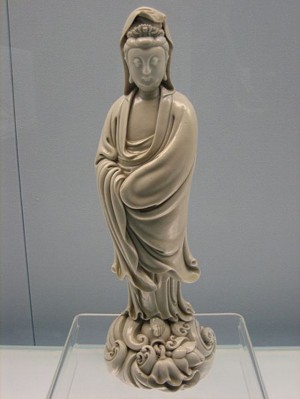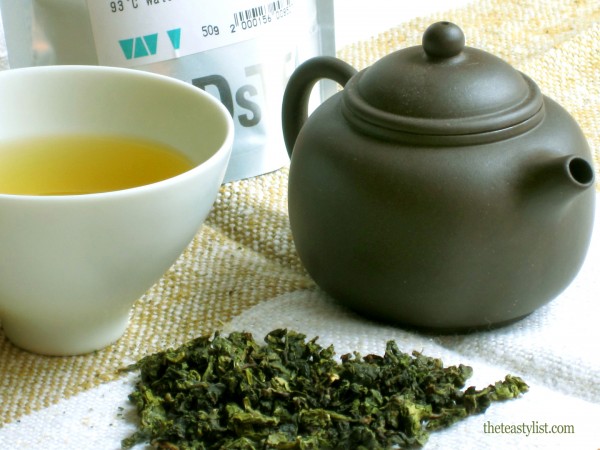As one of the most popular teas in China, Tie Guan Yin Oolong qualifies for ‘top ten’ of Famous Teas of China. This list varies, depending on what you read, but generally it’s based on the number of published mentions the teas receive and their popularity at the time the list was compiled. Originally the list comprised of Tribute Teas which often have a famous sacred location, water source and/or legend attached to them. Tribute teas would have been presented to the Emperor or distinguished dignitary and were sometimes used in lieu of taxes. Tie Guan Yin is on every list. I’ve chosen it as #10, but sometimes it appears as #8, #9 or even #4
The Legend
Like many Chinese teas, Tie Guan Yin, 铁观音 comes with its own legend.
A statue of Guan Yin, the Goddess of Mercy, was housed in a run-down temple in Fujian province. A poor farmer walked past everyday on his way to work. Out of respect for the Goddess, he regularly lit incense and cleaned the dilapidated temple. One night Guan Yin appeared to him in a dream with instructions to look in a certain cave for a treasure. The next morning he went to the cave and found a small tea shoot which he lovingly cared for. He named it Tie Guan Yin after the Goddess, adding Iron (Tie) to her title because of the dark colour of his processed leaf. TGY leaves may vary in colour from jade to brown/green.

Processing
The word Oolong means “Black Dragon”, possibly because some Oolongs resemble dragon tails. Oolongs are sometimes referred to as “Blue” Teas. Tie Guan Yin originates in Anxi County of China’s Fujian Province and is known as a “Min Nan” tea, meaning that it is from south of the Min River. Jade green in colour, the withered leaves of Tie Guan Yin Oolong are rolled into tight glistening balls. The pluck is usually from a mature leaf set that will withstand 30 or more hand or machine rollings. This process intensifies the juices and seals in the flavours that are slowly revealed as the leaves unfurl through multiple infusions. Tie Guan Yin is a lightly oxidized tea, so it sometimes appears to be more green than black. The tea in the photo is jade green in colour, tightly rolled with a slight sheen. TGY refers to a Cultivar as well as a style of processing.

We’re reviewing an organic Tie Guan Yin from David’s Tea. His chain of stores is expanding across Canada and attracting a crowd of newly converted tea drinkers with the store’s minimalist style and smart marketing. The more tea drinkers in the world, the better!
Preparation
- Measured 3.4 grams of dry leaf. General rule with Oolong; double the amount of dry leaf you would use for other teas
- Placed leaves in a traditional Yixing Oolong teapot that held 4 oz of water
- Heated water to 95°
- Rinsed the tea leaves with the water. Technically this is the first infusion, but for the purpose of this review, we’re referring to this as a ‘rinse’.
- Poured 95° water on the leaves and steeped them for 45 sec.
- When poured, the liquor was a pale amber colour.
- The wet leaves had started to unfurl and gave a fragrant floral aroma
- The liquor tasted of strong floral notes with a background of green.
- The finish was sweet and slightly milky.
Second infusion: We added 15 secs for a 1 min. infusion which yielded more florals, especially citrus blossom and less green background and less milkiness.
Third infusion: A 60 sec. infusion continued the strong florals with increased sweetness.
TGY pairs nicely with most Asian foods such as sticky rice or noodle dishes, but it also performs well as an afternoon tea served with fruits and lightly sweetened desserts.
We’re confident that this tea would have delivered another 3 infusions – an advantage of Tie Guan Yin Oolong and doubtless one of the reasons for its huge popularity!




